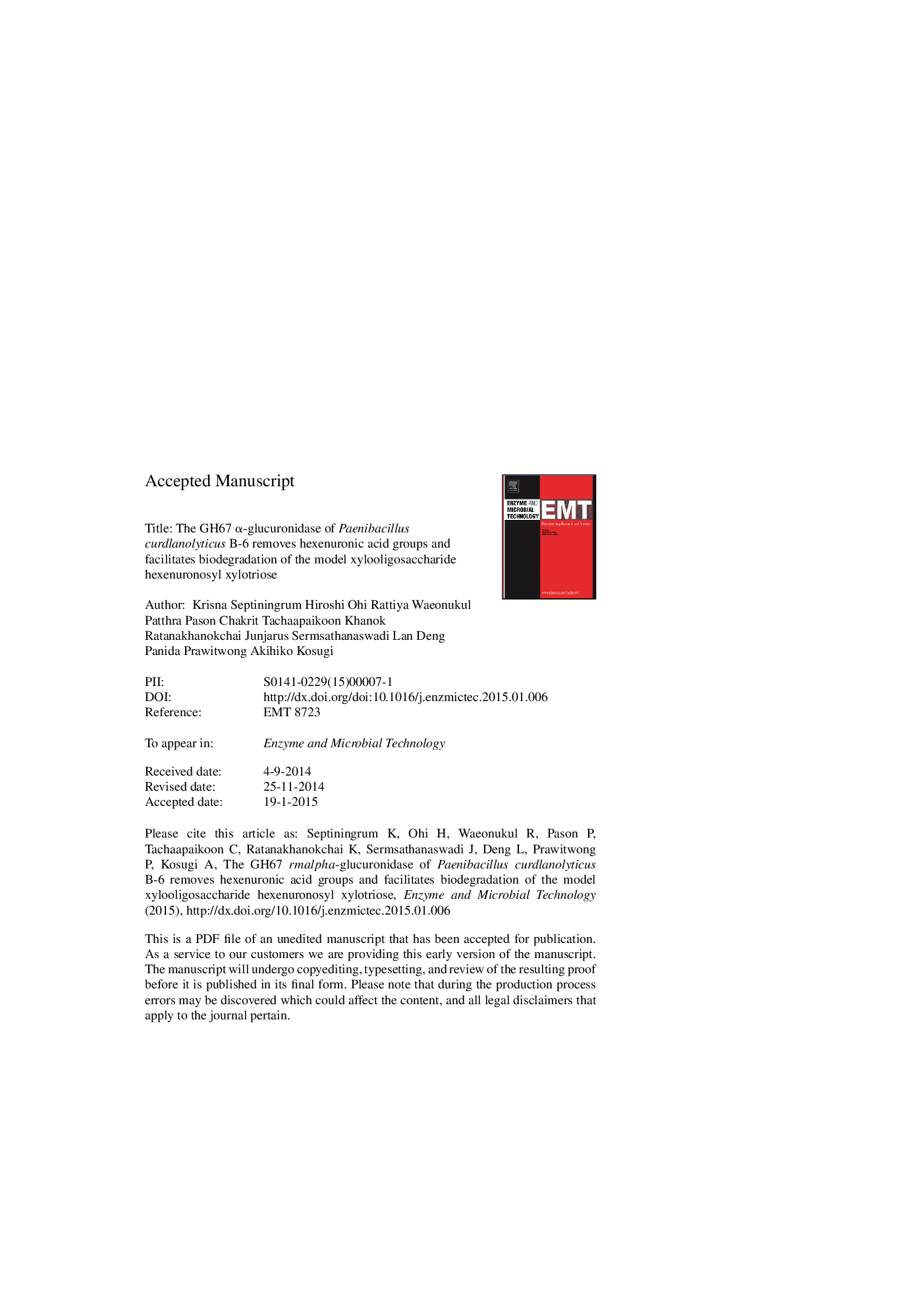| Article ID | Journal | Published Year | Pages | File Type |
|---|---|---|---|---|
| 6488275 | Enzyme and Microbial Technology | 2015 | 34 Pages |
Abstract
4-O-Methylglucuronic acid (MeGlcA) side groups attached to the xylan backbone through α-1,2 linkages are converted to hexenuronic acid (HexA) during alkaline pulping. α-Glucuronidase (EC 3.2.1.139) hydrolyzes 1,2-linked MeGlcA from xylooligosaccharides. To determine whether α-glucuronidase can also hydrolyze HexA-decorated xylooligosaccharides, a gene encoding α-glucuronidase (AguA) was cloned from Paenibacillus curdlanolyticus B-6. The purified protein degraded hexenuronosyl xylotriose (ÎX3), a model substrate prepared from kraft pulp. AguA released xylotriose and HexA from ÎX3, but the Vmax and kcat values for ÎX3 were lower than those for MeGlcA, indicating that HexA side groups may affect the hydrolytic activity. To explore the potential for biological bleaching, ÎX3 degradation was performed using intracellular extract from P. curdlanolyticus B-6. The intracellular extract, with synergistic α-glucuronidase and β-xylosidase activities, degraded ÎX3 to xylose and HexA. These results indicate that α-glucuronidase can be used to remove HexA from ÎX3 derived from pulp, reducing the need for chemical treatments in the pulping process.
Keywords
Related Topics
Physical Sciences and Engineering
Chemical Engineering
Bioengineering
Authors
Krisna Septiningrum, Hiroshi Ohi, Rattiya Waeonukul, Patthra Pason, Chakrit Tachaapaikoon, Khanok Ratanakhanokchai, Junjarus Sermsathanaswadi, Lan Deng, Panida Prawitwong, Akihiko Kosugi,
